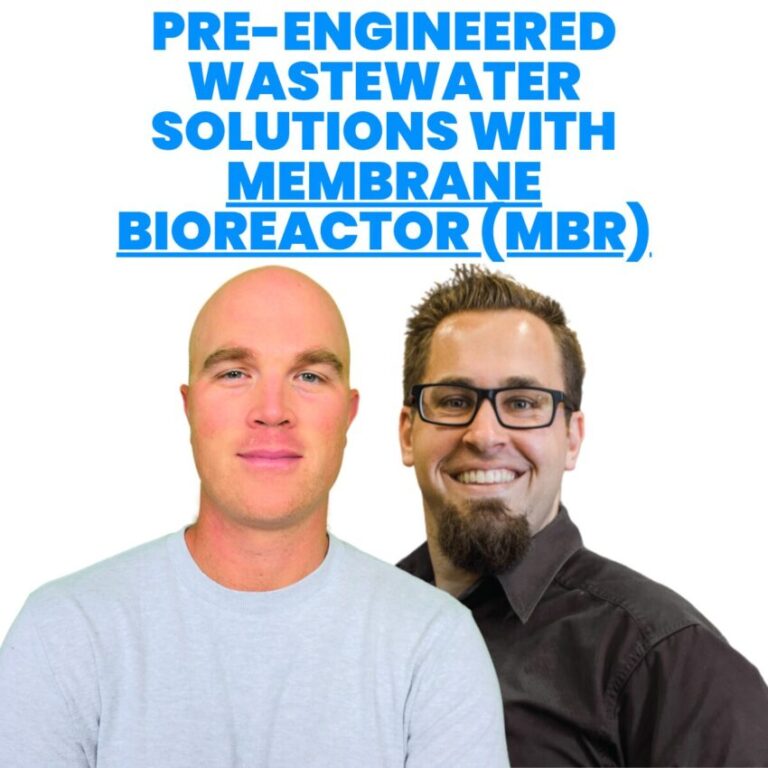Cloacina’s Integrated Wastewater Solutions: How Developer-Focused Design Creates Better Treatment Systems
Troy Ellison from Cloacina joined our Engineers for Communities podcast to share insights about their approach to wastewater treatment systems, particularly for developers working on new projects. Troy brings years of operational experience to equipment design, and his company has built their reputation on understanding what developers actually need versus what they think they need. Our conversation revealed how Cloacina’s methodology addresses both the financial realities developers face and the long-term operational challenges that determine project success.
Understanding Developer Economics and Project Timing
Cloacina starts every project by understanding the developer’s business model and timeline. Troy explained that some developers want to minimize upfront capital because they plan to sell the project or hand it over to a utility district. Others are willing to invest heavily at the beginning because they expect rapid absorption and want everything ready for major builders.
Project phasing affects total costs significantly. While phased development requires less money upfront, it typically costs more over the long term. For projects with two to three-year timelines, investing everything upfront usually makes financial sense. For ten-year development horizons, phased approaches may be more practical despite higher total costs.
Cloacina offers systems ranging from small residential developments processing a few thousand gallons daily up to large projects handling a million gallons per day. This range allows them to match capacity to actual development plans rather than forcing developers into standard sizes.
Operations Experience Drives Smart Design Decisions
What sets Cloacina apart is their operations background. Troy’s team has run treatment plants since 1990, giving them practical understanding of what actually happens in the field. Their fundamental principle is simple: if maintenance isn’t easy, it won’t get done.
This operations focus influences every design decision. Equipment must be accessible for both routine maintenance and visual inspection. Operators need to see what’s happening with equipment and reach components that require service. Many manufacturers design systems assuming they’ll never need maintenance, then create access nightmares when service is required.
Troy specifically mentioned avoiding shipping container installations despite their lower initial costs. While containers provide climate protection, they create maintenance problems when you need to remove equipment located behind other components.
Simplicity Beats Complexity in Long-Term Operations
Cloacina’s design philosophy emphasizes simplicity and component reduction. When evaluating design alternatives, they consistently choose options with fewer moving parts and minimal operator input requirements. If gravity can accomplish something instead of pumps, they use gravity every time.
This approach requires extensive operational knowledge to understand real-world maintenance requirements. Troy noted that many engineers lack field experience and design systems that look good on paper but create operational problems. The best engineers he’s worked with either came from operations backgrounds or actively seek feedback from operators.
The disconnect between design engineering and field maintenance represents a common industry problem. Troy compared this to modern automotive design where you can’t access anything under the hood versus older vehicles designed with mechanics in mind.
Market Recognition and Industry Evolution
Troy‘s experience shows that operational simplicity translates directly to system reliability and cost-effectiveness. Plants designed with maintenance accessibility in mind experience fewer emergency repairs and longer equipment life. Operators appreciate systems where they can actually see and reach equipment that needs attention.
For developers, this operations focus means lower long-term costs and fewer complaints from utility districts or property owners taking over systems. The market is recognizing these advantages as consulting engineers often return to integrated solutions after trying to piece together individual components.
As experienced operators retire and skilled maintenance personnel become harder to find, equipment that’s easier to service becomes more valuable. Cloacina’s integrated methodology addresses real problems that developers and operators face while avoiding common pitfalls that create long-term operational challenges.
Conclusion
Troy’s insights from our Engineers for Communities podcast demonstrate that successful wastewater treatment systems must work in the real world, not just in engineering calculations. His operational background brings practical perspective to equipment design that benefits developers, operators, and consulting engineers. Cloacina’s integrated approach eliminates coordination problems while operations-focused design ensures long-term reliability and maintainability.

